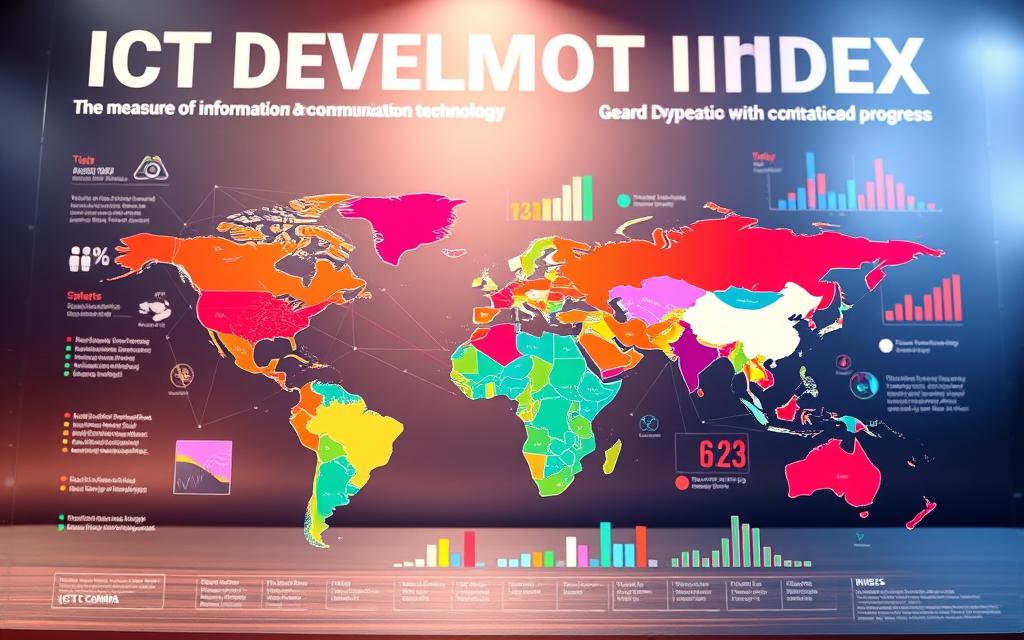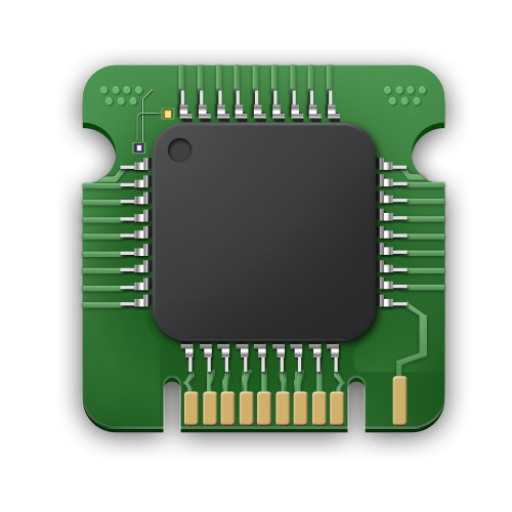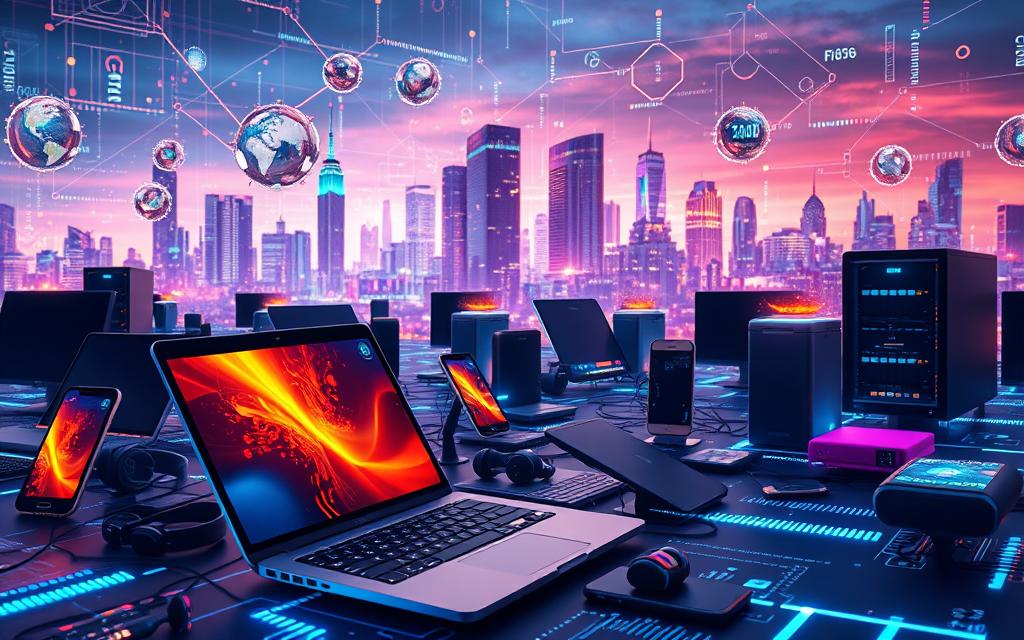In today’s digital landscape, Information and Communication Technology (ICT) plays a vital role in transforming how individuals, businesses, and organizations process, store, and exchange data.
ICT encompasses a broad spectrum of computing and telecommunications devices and practices, serving as the backbone of digital communication and information management systems.
According to TechTarget, ICT refers to the infrastructure and components that enable modern computing, aiming to improve how humans create, process, and share data or information with each other.
As the driving force behind the Fourth Industrial Revolution, ICT is crucial for economic development, business growth, and has numerous applications across various sectors.
Understanding Information and Communication Technology (ICT)
Understanding Information and Communication Technology (ICT) requires exploring its definition, scope, and how it differs from traditional Information Technology (IT). ICT is a comprehensive term that encompasses a broad range of technologies used for communication and information management.
Definition and Scope of ICT
Information and Communications Technology (ICT) is an extensional term for information technology (IT) that stresses the role of unified communications and the integration of telecommunications, computers, and necessary enterprise software, middleware, storage, and audiovisual. This broad scope includes technologies used to handle telecommunications, broadcast media, audio-visual processing, and transmission systems, as well as network-based control and monitoring functions.
The scope of ICT is vast, covering:
- Telecommunications and broadcast media
- Intelligent building management systems
- Audiovisual processing and transmission systems
- Network-based control functions
By understanding the definition and scope of ICT, we can appreciate its role in modern digital infrastructure.
How ICT Differs from IT
While Information Technology (IT) primarily focuses on the use of computers, software, and networks for storing, retrieving, and sending information, ICT encompasses all forms of communication technology. This includes not just computers and software but also all devices and systems that facilitate the transmission, exchange, and storage of information.
The key differences between ICT and IT are:
- ICT covers a broader range of technologies, including telecommunications and broadcast media.
- ICT emphasizes unified communications and the integration of various technologies.
- ICT is not just about data management but also about facilitating communication and information exchange.
By distinguishing between ICT and IT, we can better understand the foundational role ICT plays in enabling the seamless flow of information across various platforms and devices.
The Evolution of Information and Communication Technology
The development of Information and Communication Technology (ICT) has been marked by pivotal milestones, transforming the way we live, work, and interact with one another. As we explore the historical context of ICT, it becomes evident that its evolution has been a driving force behind the modern digital landscape.
Historical Development of ICT
The historical development of ICT is characterized by significant advancements in communication technologies and networks. Early research and development in the 1960s laid the groundwork for modern ICT, with the conception of networking ideas and the first packets carried by ARPANET. This period marked the beginning of a new era in information communication technologies, setting the stage for future innovations.
The subsequent decades saw the formalization of protocols like TCP/IP, the emergence of commercial packet-switched networks, and the introduction of the Domain Name System (DNS). These developments were crucial in shaping the systems that underpin today’s digital world.
Key Milestones in ICT Advancement
Several key milestones have defined the advancement of ICT. The 1980s witnessed the formalization of the TCP/IP protocol suite and the first .COM domain registration. The 1990s were marked by the decommissioning of ARPANET, the birth of the World Wide Web, and the development of web browsers like Mosaic. More recently, the 2000s and 2010s saw the rise of social networking sites, cloud computing, mobile applications, and artificial intelligence, further transforming the ICT landscape.

The rapid pace of ICT development has accelerated in recent decades, setting the stage for the current digital revolution. As technology continues to evolve, it is likely to have a profound impact on the world, driving further innovations and changes in how we communicate and access information.
What is the Information and Communication Technology: Core Components
At the heart of ICT are several key components that together form the backbone of modern information infrastructure. These components work in concert to enable the processing, storage, and communication of information.
Hardware Components
Hardware components are the physical devices that make up the ICT infrastructure. These include computers, servers, mobile devices, and networking equipment. They provide the necessary processing power, storage, and connectivity for ICT systems. For instance, servers store and manage data, while computers and mobile devices serve as interfaces for users to interact with ICT systems.
- Computers and mobile devices enable user interaction.
- Servers manage and store data.
- Networking equipment facilitates connectivity.
Software and Applications
Software and applications are crucial for enabling functionality and user interaction with hardware components. They process data and facilitate communication within ICT systems. Software ranges from operating systems that manage hardware resources to applications that provide specific functionalities, such as email clients and web browsers.
- Operating systems manage hardware resources.
- Applications provide specific functionalities.
- Software processes and manages data.
Networks and Telecommunications
devices and systems, enabling the exchange of information across distances. Telecommunications technologies, including internet protocols and mobile networks, facilitate remote communication. Networks, such as local area networks (LANs) and wide area networks (WANs), provide the infrastructure for data exchange.
- Telecommunications enable remote communication.
- Networks provide infrastructure for data exchange.
- Internet protocols facilitate global connectivity.
In summary, the core components of ICT—hardware, software, and networks—work together as integrated systems to store, process, and transmit data, forming the foundation of modern information infrastructure.
Key Technologies Driving Modern ICT
The modern ICT landscape is driven by several key technologies that are transforming how we interact with information. These technologies are revolutionizing the way we communicate, access information, and process data.
Internet and World Wide Web
The Internet and World Wide Web are foundational technologies that have enabled global connectivity and information access. The Internet has connected billions of devices worldwide, creating a digital ecosystem that spans the globe. As stated in the article on different types of information technology, the Internet is a critical component of modern ICT.
Mobile Technology
Mobile technology, including smartphones and tablets, has put computing power and communication capabilities in the hands of billions. This has enabled users to access information and communicate on the go, transforming the way we live and work.
Cloud Computing
Cloud computing has enabled the storage and processing of data over the internet, rather than on local servers or personal devices. This has enabled scalable and flexible IT infrastructure that can be accessed from anywhere, revolutionizing the way businesses operate.
Artificial Intelligence and Machine Learning
Artificial intelligence and machine learning are enhancing ICT capabilities, enabling systems to learn, adapt, and perform complex tasks that previously required human intelligence. These technologies are being used in a range of applications, from speech recognition to complex data analysis.
| Technology | Description | Impact |
|---|---|---|
| Internet and World Wide Web | Global connectivity and information access | Revolutionized global communication and information access |
| Mobile Technology | Computing power and communication capabilities | Transformed the way we live and work |
| Cloud Computing | Scalable and flexible IT infrastructure | Revolutionized business operations |
| Artificial Intelligence and Machine Learning | Enhanced ICT capabilities | Enabled complex tasks and data analysis |
ICT Applications in Business and Industry
Businesses today rely heavily on ICT to streamline operations, improve customer service, and drive growth. The use of information communications technology has revolutionized traditional business practices, opening new avenues for innovation and efficiency.

Business Communication and Collaboration
ICT has significantly enhanced business communication and collaboration. With the help of ICT tools, teams can work together seamlessly, regardless of their geographical location. This has been made possible through various platforms that enable real-time communication, file sharing, and project management. As a result, businesses can improve productivity and reduce the time taken to complete tasks.
- Enhanced team collaboration through ICT tools
- Improved communication across different locations
- Increased productivity due to efficient project management
Data Management and Analytics
Effective data management is crucial for businesses to make informed decisions. ICT enables companies to collect, process, and analyze vast amounts of data. Through advanced analytics, businesses can gain valuable insights into customer behavior, market trends, and operational efficiency. This information is critical for strategic planning and improving overall business performance.
As noted by a business intelligence expert, “Data is the new oil. It’s valuable, but if not refined, it can’t be used effectively.” ICT helps in refining this data into actionable insights.
E-commerce and Digital Transactions
The rise of communication technology has transformed the way businesses sell products and services. E-commerce platforms have made it possible for businesses to reach a global audience, facilitating digital transactions on a large scale. This has not only expanded the customer base for businesses but has also changed the way consumers make purchases.
By use ICT for e-commerce and digital transactions, businesses can automate routine tasks, streamline operations, and enhance customer service. This ultimately contributes to business competitiveness and success in the digital economy.
ICT in Education and Learning
With the advent of ICT, educational practices have undergone a significant transformation, offering unprecedented opportunities for students and educators. The integration of ICT in education has not only enhanced the learning experience but also expanded access to quality educational resources.
Transforming Educational Practices
The use of ICT in educational settings has revolutionized the way students learn and teachers instruct. By incorporating ICT into pedagogy, educators can create more engaging and interactive learning environments. For instance, using ICT in combination with innovative teaching methods like Writing to Learn has shown to produce better results in literacy and math compared to traditional methods alone. This approach supports personalized learning and enables students to develop critical digital skills.

Challenges and Opportunities in Educational ICT
Despite the benefits, implementing ICT in education comes with its challenges, including the digital divide and the need for teacher training. Ensuring that all students have equal access to ICT is crucial for bridging this divide. Moreover, educators must be equipped with the necessary skills to effectively integrate ICT into their teaching practices. By addressing these challenges, ICT can continue to enhance learning outcomes and provide students with the skills required for success in a digital future.
The Global Impact of ICT
The global impact of Information and Communication Technologies (ICT) is transforming economies and societies worldwide. As ICT continues to advance, it plays a crucial role in shaping the future of various countries around the world.
ICT and Economic Development
ICT has been instrumental in fostering economic development by providing access to new markets, enhancing business efficiency, and creating new opportunities for entrepreneurship. According to recent studies, countries with higher levels of ICT adoption tend to have higher economic growth rates. For instance, the integration of digital technologies has enabled businesses to expand their reach globally.
Digital Divide: Challenges and Solutions
Despite the benefits of ICT, the digital divide remains a significant challenge. Disparities in access to ICT resources between different regions and socioeconomic groups hinder equitable development. Efforts to bridge this gap include initiatives by governments and international organizations to expand ICT infrastructure and promote digital literacy among underserved populations.
ICT Development Index and Global Rankings
The ICT Development Index provides a comprehensive measure of a country’s ICT capabilities, including access, use, and skills. Countries like Denmark and South Korea have topped the rankings due to their advanced ICT infrastructure and high levels of digital literacy. Understanding these rankings helps policymakers identify areas for improvement and develop strategies to enhance their ICT ecosystems.

Challenges and Future Trends in ICT
The ICT landscape is characterized by both tremendous opportunities and significant challenges, requiring a balanced approach to maximize its benefits. As organizations increasingly rely on digital systems and networks, they become vulnerable to various risks, including cyber threats and data breaches.
Security and Privacy Concerns
One of the primary challenges facing ICT is the need to ensure robust cybersecurity measures and compliance with data protection regulations. Data privacy is a critical issue, as the increasing reliance on digital systems has created new vulnerabilities and risks related to data protection and cybersecurity. Organizations must implement effective security protocols to mitigate these risks.
| Security Measure | Description | Benefits |
|---|---|---|
| Encryption | Protects data by converting it into an unreadable format | Ensures confidentiality and integrity of data |
| Firewalls | Controls incoming and outgoing network traffic | Blocks unauthorized access to networks |
| Access Controls | Regulates user access to systems and data | Prevents unauthorized data access and misuse |
Emerging Technologies in ICT
Emerging communication technologies such as quantum computing, extended reality, and advanced networking are transforming the ICT landscape. These technologies promise to further enhance how we use ICT in various aspects of life and business. For instance, quantum computing can solve complex problems that are currently unsolvable, while extended reality can revolutionize education and training.

Sustainable and Ethical ICT
The importance of sustainable and ethical approaches to ICT development and use cannot be overstated. As the ICT sector grows, its environmental impact becomes a significant concern. Organizations must adopt sustainable practices and ensure that their ICT solutions are environmentally friendly and socially responsible.
In conclusion, while ICT presents several challenges, it also offers numerous opportunities for growth and innovation. By addressing security and privacy concerns, embracing emerging technologies, and adopting sustainable practices, organizations can navigate these challenges and leverage the benefits of ICT.
Conclusion
In the modern era, the role of Information and Communication Technology in shaping our daily experiences and interactions is undeniable. Throughout this article, we have explored the definition, components, and significance of ICT, highlighting its broader scope compared to traditional information technology.
The transformative impact of ICT on the way we communicate, work, learn, and access information has been profound. ICT has become integral to modern life, revolutionizing various aspects of society, business, and individual experiences. As we move forward, it is crucial to consider the challenges and opportunities that ICT presents for the future, including issues related to accessibility, security, and ethical use.
As communication technology continues to evolve, it is likely to shape society, business, and individual experiences in profound ways. Staying informed about and engaged with these evolving technologies is essential for harnessing their potential and mitigating their risks. By understanding the complexities of ICT, we can better navigate the future of information technology and its far-reaching implications.
In conclusion, the significance of ICT in today’s world is clear. Its continued advancement will undoubtedly have a lasting impact on how we live, work, and interact with one another. By embracing this technology and addressing its challenges, we can create a more connected and equitable world.







